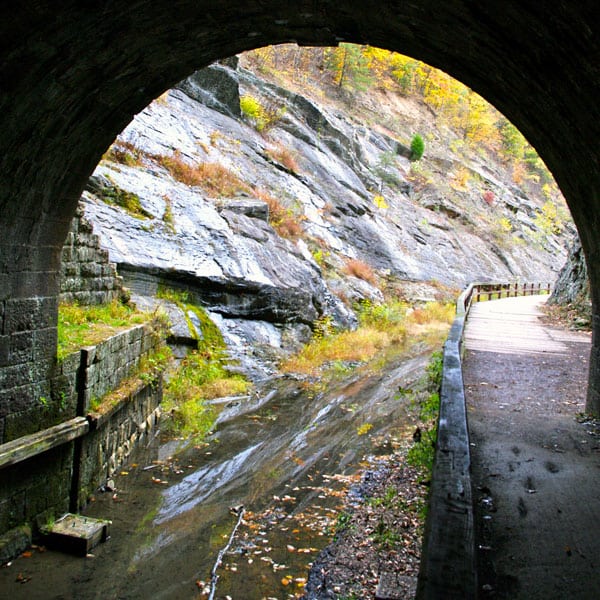
September 16, 2018; Washington Post
The Chesapeake and Ohio Canal National Historical Park (C&O Canal) boasts one of the largest volunteer programs within the national park system. Within the past year, more than 3,400 volunteers have contributed approximately 65,000 hours in service to the park. However, park officials have found itself in hot water with its most loyal group of supporters after a survey led to the abrupt exit of a beloved volunteer.
The saga began in February, when a survey was administered “to improve volunteer programs and the volunteer experience.” Volunteer leaders were immediately suspicious of the park’s motives because anonymity was not an option. Shortly after results were submitted, Bob King, a volunteer leader with the Billy Goat Trail system for six years and 2012 volunteer of the year, was dismissed. King attributes his candid feedback for his abrupt exit. However, park officials claim that his behavior was the cause of dismissal. Other volunteers contest the claim, arguing that King was devoted and highly respected among his peers. In protest, several volunteer leaders have quit or reduced their hours.
The mysterious circumstance surrounding King’s departure is only one of many grievances volunteers have with the organization, with many of the problems stemming from lack of funding. NPQ has frequently discussed the financial woes affecting the national parks, including the controversial decision to allow corporate sponsorships, the mass exodus of members of the National Park Advisory Board, and most recently, L.L. Bean’s attempt to reimage itself after political bankrolling allegations. Over the last eight years, the C&O Canal has seen a seven percent reduction in staff. To maintain operations, the organization has shifted resources to areas deemed “most critical,” which unsurprisingly does not include volunteer management.
With key volunteer management positions left unfilled, volunteers are concerned about receiving adequate support from the park, especially in the event of a rescue mission. The loss of staff has also led to little training and heightened risk. Kevin Murphy, who has volunteered with C&O Canal for five years, states, “It’s getting unsafe for visitors, too, because there are less of us out there who are fully trained, experienced, and who can help in an emergency.” Earlier this year, the parks temporarily paused volunteer recruiting, citing an inability to effectively manage them. As the pool of volunteers decreases, park officials see it as an opportunity to improve existing programs and better cater to individual volunteer needs.
Sign up for our free newsletters
Subscribe to NPQ's newsletters to have our top stories delivered directly to your inbox.
By signing up, you agree to our privacy policy and terms of use, and to receive messages from NPQ and our partners.
According to C&O Canal superintendent Kevin Brandt, the park system is “looking at what we can do to ensure…volunteers are working safely, are trained properly and are led properly and thanked properly.” However, when it comes to being thanked properly, many volunteers aren’t feeling the love. Despite taking on more responsibilities, volunteers have experienced open hostility from park officials, with some staff members even going as far as to refer to them as “poop patrol” or “garbage collectors.” While staff may underestimate their value, it’s certainly not lost on volunteers. Ric Jackson, a volunteer with the Bike Loaner Program, put it bluntly: “You can’t mistreat us. You can’t treat us like children…They have a huge physical resource here in these people—people who really care—and they’re wasting it.”
Kevin Murphy, another volunteer with the Billy Goat Trail program, recalls staff repeatedly making such statements as, “You’re a volunteer, if you don’t like how we do things, just leave.” Such sentiments from staff are deplorable, in that volunteers have offered their services freely to save taxpayers approximately $1.6 million within the last year alone. Moreover, their commitment allows the park system to increase service delivery despite shrinking federal funding.
The situation unfolding at C&O Canal is a perfect reminder that successful volunteer programs must consider the overlapping needs of the agency, its volunteers, and the clients it serves. It appears that in an effort to maintain operations, staff has forgotten that their core base consists of volunteers, each with personal motivations that keep them committed to serving. As the park system works to improve its volunteer program, it must take into account volunteer needs. Otherwise, they may find it difficult to retain them.
A report derived from the survey results is expected to be released next month. Hopefully, it will shed light on the structural changes and financial resources required to improve the program and finally give much needed attention to volunteers, who are often overlooked but come complete with energy that can be used both for service and advocacy. That’s something the parks—under this administration or any administration—don’t have the luxury of ignoring.—Chelsea Dennis












